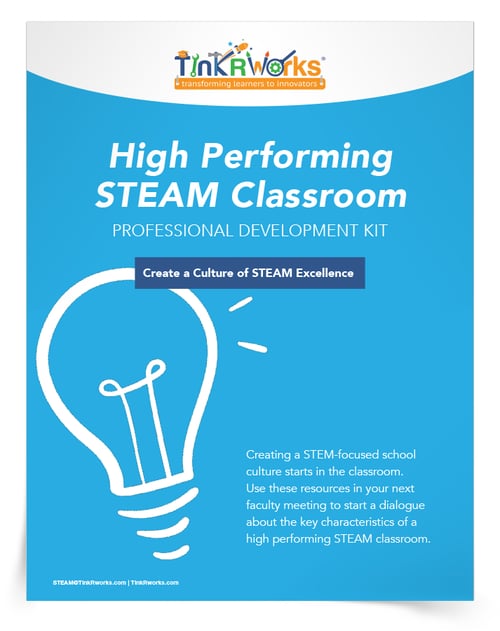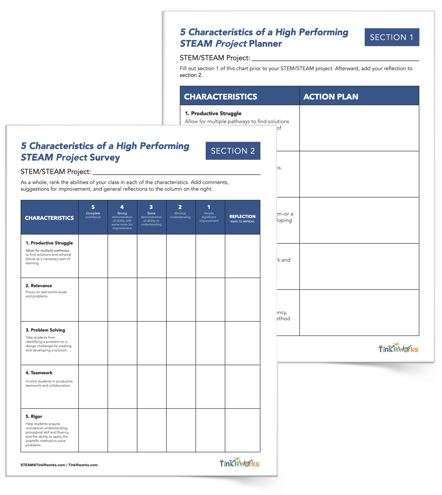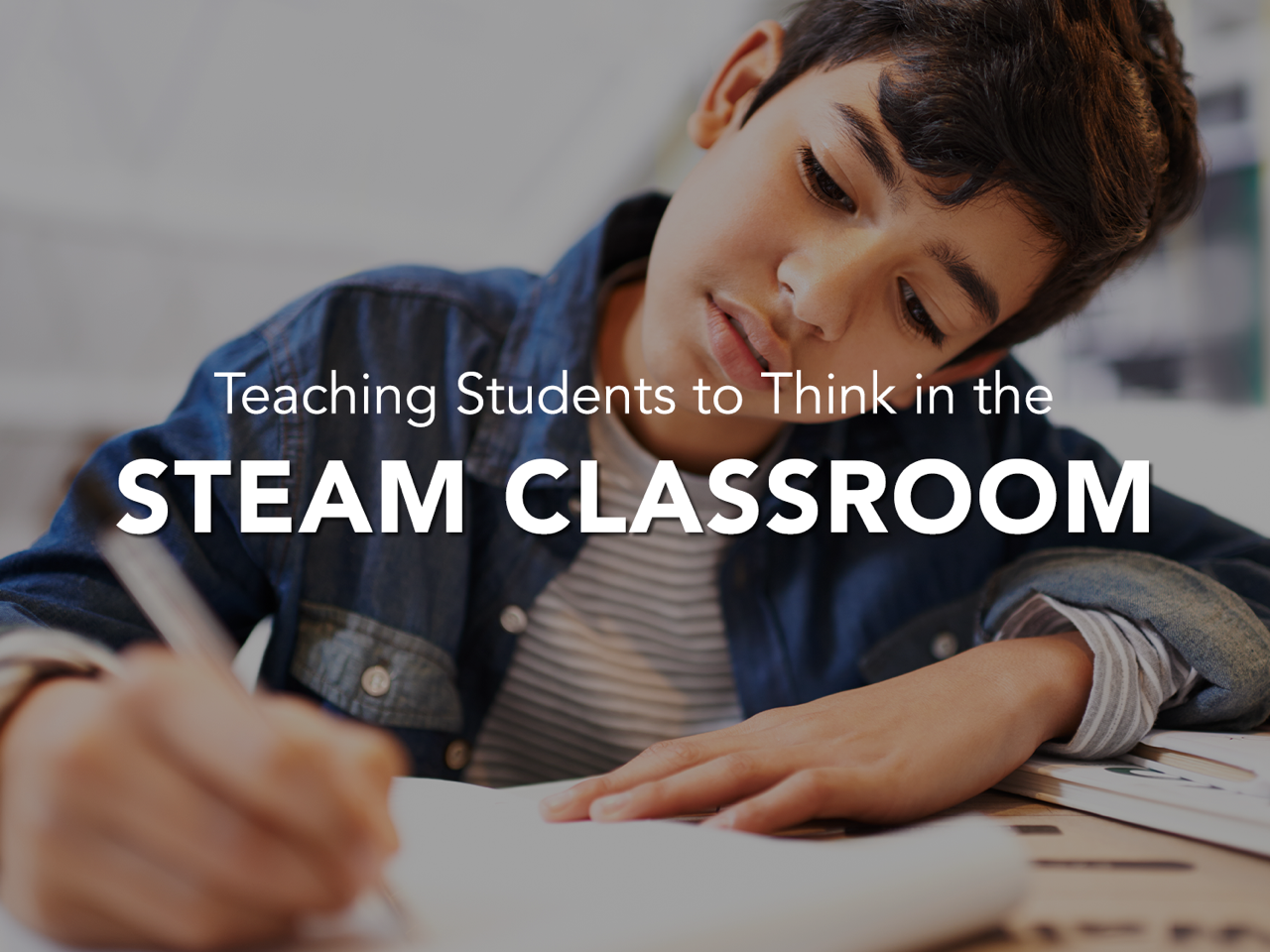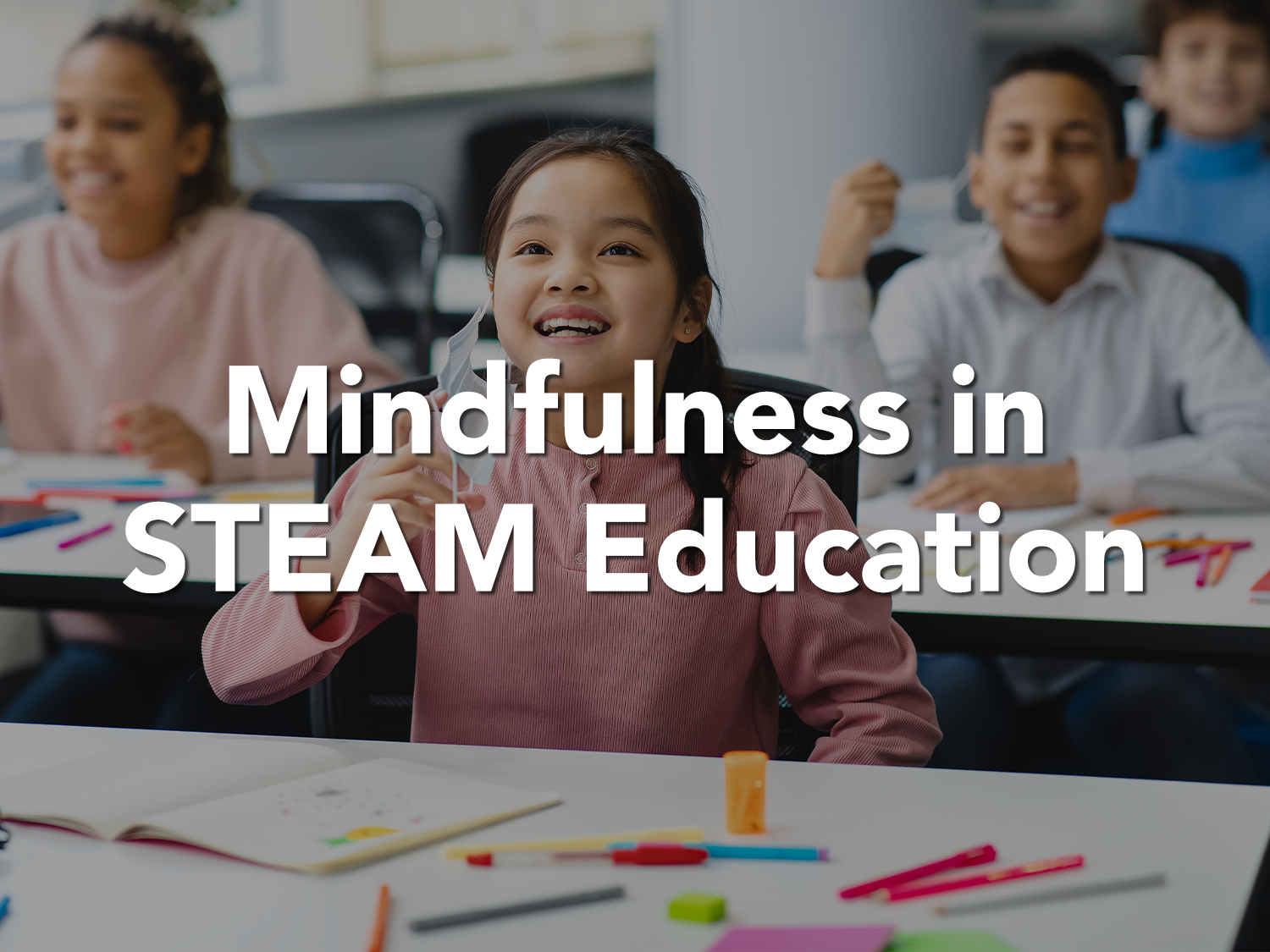5 Characteristics of a High Performing STEAM Classroom
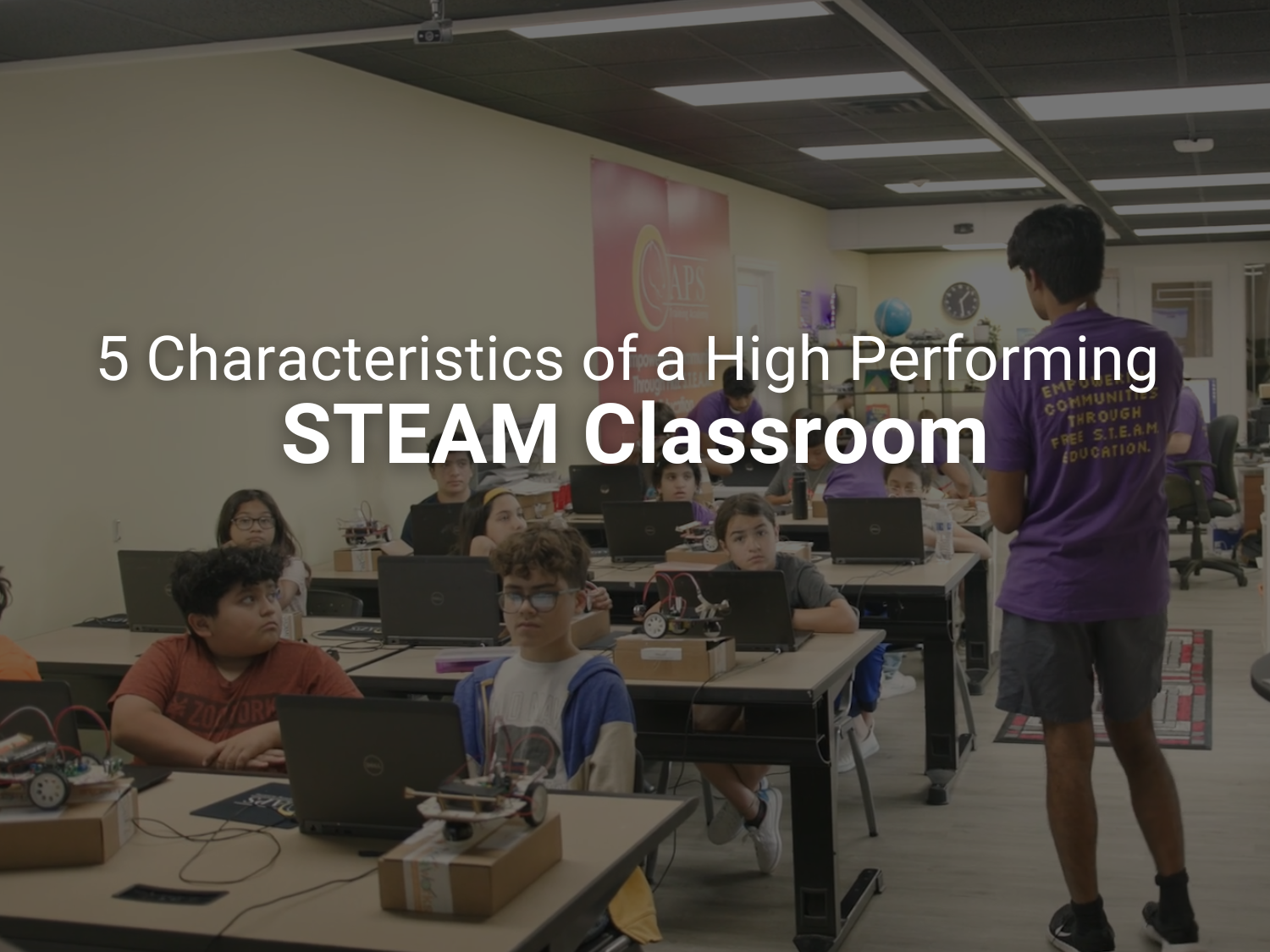
Cultivating a high performing STEAM (Science, Technology, Engineering, Art, Math) classroom takes planning, organization, and intentionality. In this article, we’ll explain the five key characteristics that every high performing STEAM classroom should have, how to develop these five characteristics, and how TinkRworks can help you bring your STEAM curriculum dreams to life! Plus, you’ll also get access to our exclusive downloadable, High Performing STEAM Classroom Professional Development Kit, so you can get started in your school this year!
A Guide to Creating a High Performing STEAM Classroom
From projects to curricula, to the adoption of STEAM makerspaces at schools, STEAM education has been gaining more and more popularity–and for good reason! The benefits of STEAM education are far-reaching both in the foundational content students master but also in the analytical skills they hone through project-based, collaborative learning. Many teachers and administrators are starting to realize the importance of STEAM competency for students' future in the workforce. In fact, research from the National Science Foundation (NSF) shows that in 2021, 32.6% of all Bachelor’s degrees (and an astounding 57% of Doctoral degrees) awarded in the U.S. fell under the Science and Engineering umbrella. In addition, the NSF reports that an increasing number of college degrees, including those related to health sciences/technologies–a field growing in popularity each year–require STEAM-related courses.
Some educators are ready to abandon their old curricula and go all-in on STEAM, while others need a bit more convincing. Despite the possible hesitations of investing deeply in something completely new, one thing is certainly clear: research shows time and time again that STEAM education has expansive benefits.
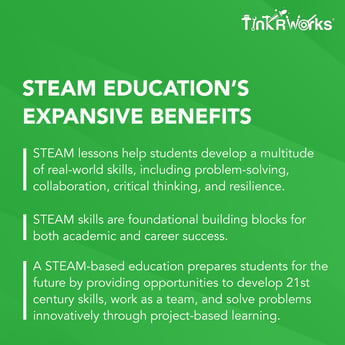
- STEAM lessons help students develop a multitude of real-world skills, including problem-solving, collaboration, critical thinking, and resilience
- STEAM skills are foundational building blocks for both academic and career success
- A STEAM-based education prepares students for the future by providing opportunities to develop 21st century skills, work as a team, and solve problems innovatively through project-based learning
Convinced already and looking for a quickstart guide on how to cultivate a high-performing STEAM classroom at your school? Download our High Performing STEAM Classroom Professional Development Kit and then keep reading for more expert tips and tricks.
5 Characteristics Of A High Performing STEAM Classroom
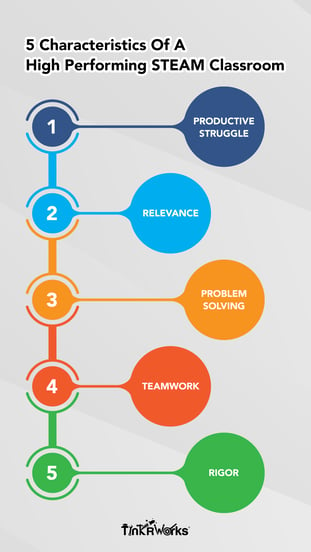
As excited as you might be to implement a STEAM environment in your school (and we’re excited for you!), it’s important to make sure that you’re set up for success. A school-wide STEAM culture starts by making sure your classrooms cultivate five key attributes.
#1 Productive Struggle
Kids are often taught (incorrectly) that there’s only one right way to solve a problem and that failure should be avoided at all costs. Many students also struggle with self-confidence when it comes to science and mathematics and think of themselves as either “good at math” or not. This type of fixed mindset and a fear of failure keep students from taking risks and trying new and innovative ways to solve problems.
In a high performing STEAM classroom, students persevere through challenges and learn from failure. By embracing the productive struggle that comes with STEAM projects, students overcome their challenges in creative and innovative ways.
Not sure how to develop students’ grit when it comes to powering through obstacles? TinkRworks curriculum is designed to help students strengthen their STEAM “muscles” and learn from productive struggle by showing them multiple ways to approach the same project.
#2 Relevance
As important as it might be to build students’ scientific vocabulary, by far the best way to increase student buy-in and retention is to start with what kids already know. Using students’ real-world experiences and knowledge as jumping-off points for STEAM lessons makes the material relevant for students. A high performing STEAM classroom allows students to learn science, mathematics, and engineering concepts through hands-on experiences. When lessons feel relevant for students and they acquire knowledge as they complete projects, there is an increase in excitement, motivation, learning, and retention.
At TinkRworks, we design all STEAM lessons around real-world problems and difficult questions. This organizing structure excites and challenges students to solve issues that relate directly to either past or future experiences. When students see themselves as tackling real-world problems, they transform from learners to innovators.
#3 Problem Solving
All robust STEAM lessons call for students to identify a real-world problem—or a design challenge. To solve the problem, students must then use creativity, innovation, and collaboration to come up with their own solutions. The rigorous analytical skills involved in this process prepares students for the type of problem-solving tasks they will face in both college and career.
As a fundamental cognitive process and vital 21st century skill, we here at TinkRworks know just how important problem-solving is. That’s why it’s the organizing-principle of every lesson we create. Through our project-based learning curriculum, students apply their analytical skills by testing possible solutions to real-world problems. Contextualizing our lessons in the real world and asking students to design solutions helps make learning engaging, meaningful, and memorable.
#4 Teamwork
Whether you’re a physician or preschool teacher, landscaper or engineer, collaboration and teamwork are crucial elements of any 21st career. A high-performing STEAM classroom allows students to develop these interpersonal skills through hands-on, collaborative exploration. Asking questions and designing solutions as a team encourages students to express themselves, negotiate, listen to other points of view, and discover multiple ways to solve a problem.
TinkRworks’s project-based learning model gives students the opportunity to gain foundational STEAM knowledge, strengthen their problem-solving muscles, develop their social-emotional competence, and build their teamwork skills all while solving problems that actually matter to them.
#5 Rigor
One element that differentiates STEAM lessons from others and produces such incredible results is the level of rigor. Research shows that a truly rigorous curriculum–one that leads to significant learning gains and increased overall academic achievement–combines three equally crucial elements:
- A strong conceptual understanding of the lesson content
- Procedural skill and fluency
- Opportunities to apply the scientific method to solve problems
At TinkRworks, all of our lessons are designed around these three core standards of rigor. We believe that persevering through rigorous lessons is the key to every child learning STEAM competency. TinkRworks’s projects not only task students with applying the scientific method to solve problems and teach them procedural skill and fluency, but they also reinforce core content knowledge in the fields of ELA, art, coding, math, design, science, engineering, and data analysis.
Resources To Help Educators Cultivate a High Performing STEAM Classroom
Here at TinkRworks, we want to put resources in the hands of teachers and help create STEAM-centered classrooms all around the world. With that in mind, we want to share with you two of our latest, greatest, and favorite STEAM downloads.
5 Characteristics of High Performing STEAM Planner
One of the hardest parts of designing and implementing a STEAM curriculum in your classroom is knowing where to start. With our 5 Characteristics of a High Performing STEAM Project Planner, we’ve broken down the five key elements of a successful STEAM lesson to help educators come up with an action plan for cultivating each attribute. Teachers can use the planner to design their own STEAM lesson or revise a current lesson based on the five characteristics. With this planner, educators will ensure that each and every STEAM lesson they teach has all the elements it needs to be rigorous, meaningful, and effective.
5 Characteristics of High Performing STEAM Survey
Reflecting on your own classroom practice can oftentimes feel overwhelming. Maybe you’d like to cultivate a high performing STEAM environment in your classroom (or maybe you’ve already tried), but you’re not getting the results you’d like. Take some time to reflect on how conducive your classroom and students are to a STEAM-centered mindset by using our 5 Characteristics of a High Performing STEAM Project Survey. Teachers will get a better understanding of how to create a better STEAM environment by rating their students’ abilities in five key areas crucial to any rigorous STEAM classroom. After rating, teachers take some time to reflect on how they can improve their practice to cultivate the best, most effective STEAM classroom possible.
In Summary
There’s no doubt about it: a high performing STEAM classroom produces incredible results in intellectual skills, social-emotional competency, core content knowledge, and the list goes on! But setting up an effective, rigorous STEAM classroom takes some effort and intentional planning on the part of both teachers and administrators. Cultivate a strong STEAM environment in your classroom or school by making sure it has 5 key elements: productive struggle, relevance, problem solving, teamwork, and rigor. Learn more about these five characteristics and how to ensure they’re present in your STEAM classroom/school today by downloading our High Performing STEAM Classroom Professional Development Kit.
-1.png?width=350&height=89&name=TinkRworks%20Logo_Learners%20to%20Innovators%20V2%20(1)-1.png)
